


March 8, 2020
JOHN MAIDMENT
–––––––––––––––––––––––––––
Historic Organ Restorations in Australia
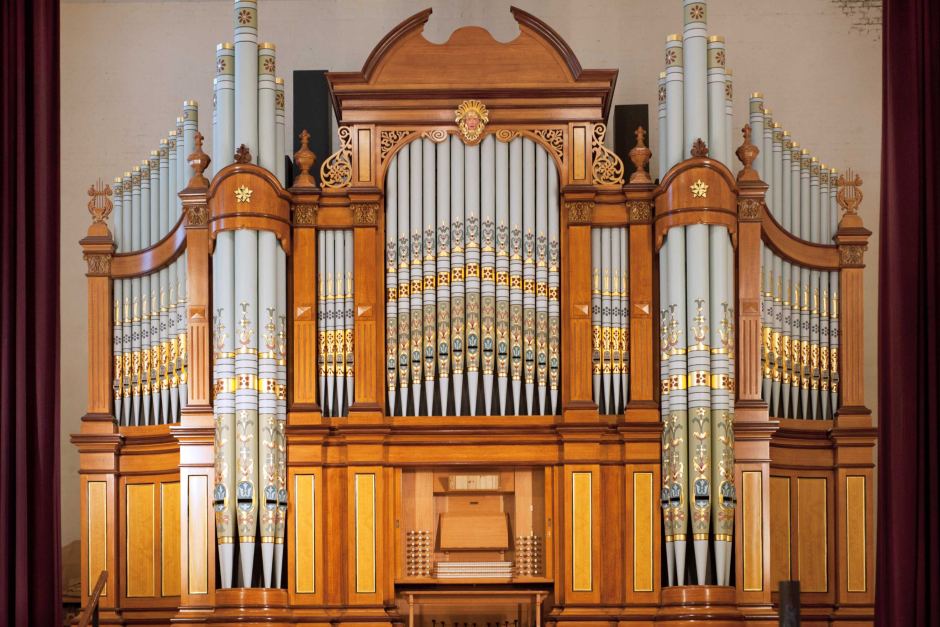
March 8, 2020
JOHN MAIDMENT
–––––––––––––––––––––––––––
Historic Organ Restorations in Australia

The 1876–77 Hill & Son organ at the Barossa Regional Gallery, Tanunda, South Australia.
The 1876–77 Hill & Son organ at the Barossa Regional Gallery, Tanunda, South Australia.
Introduction
Australia was fortunate to have enjoyed a period of great prosperity in the second half of the nineteenth century. Funding was available to commission outstanding pipe organs from British, European, and Australian organbuilders, including major concert hall organs. A thriving local organbuilding industry emerged, with George Fincham in Melbourne taking the leading role. In the interwar period, there were many imports from Aeolian and Wurlitzer, with local firms building impressive organs in a symphonic style. However, appreciation of the earlier heritage declined at this time as older instruments were seen to be unfashionable and no organisation was available to harness its preservation.
Early Examples of Organ Destruction
The decimation of Australia's organ heritage started with a vengeance after World War II. Organs with mechanical action were regarded as obsolete and often had been poorly maintained. While the majority of these were preserved, they were subjected to invasive rebuilding that usually involved electrification, provision of a new console (usually stopkey on account of cheapness), replacement of wind systems, and tonal revision involving the addition of mixture and mutation stops, sometimes through the cutting down of existing pipework or through extension of material placed on unit chests. Through this process, often mistakenly undertaken through adhesion to the principles of the "classical" revival, the organs of symphonic builders, such as Frederick Taylor in Melbourne and J.E. Dodd in Adelaide, substantially eroded away.
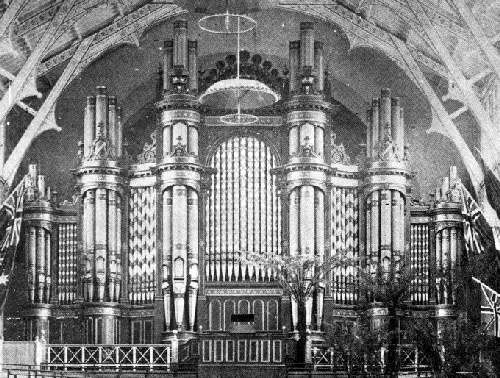
In my childhood, I recall two significant examples of concert organs that were later destroyed. The Exhibition Building in Melbourne, built in 1880, had a colossal four-manual organ of 70 speaking stops, with a gargantuan 32' façade, constructed by the Melbourne organ builder George Fincham. It had an amphitheatre console, after Notre-Dame in Paris, mechanical action with Barker levers, a wealth of chorus registers, and pipework voiced upon 10.5 inches of wind to compensate for the vast space. I later found that the contents of the organ were emptied out for scrap in 1948 and the case destroyed in 1965.

A second Fincham concert organ, at suburban St Kilda Town Hall, was built in 1892 by Fincham & Hobday and seen on a school excursion around 1956. A few years later, the splendid cases and diapered façades were destroyed and the organ electrified and controlled from a mobile console. The instrument and hall were destroyed by fire in 1991.
Early Examples of Organ Restoration
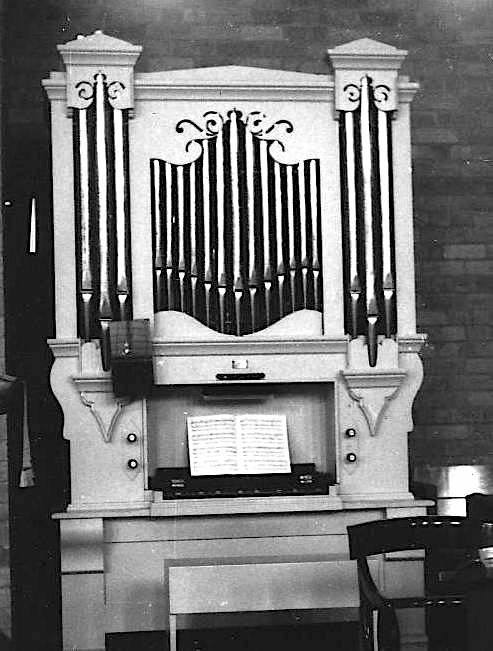
In the 1960s, several local organ builders such as S.T. Noad, Stephen Laurie, Ronald Sharp and Hill, Norman & Beard restored nineteenth century organs by Brindley & Foster, J.W. Walker, Daniel Lemke, George Fincham, Henry Willis and Alfred Hunter. All of these instruments had mechanical key action and thus conformed with "classical" principles. At St Stephen's Church, Richmond, Bruce Evans was a responsible custodian of its 1865 J.W. Walker organ and entrusted its restoration in 1963 to the local Walker representative Arthur Jones rather than allowing local builders to carry out a standard electrification. In the same year, Steve Laurie carried out a sensitive restoration of a small gem from the Barossa Valley, South Australia built by German émigré Daniel Lemke. In 1966, Ronald Sharp and Mark Fisher restored the 1863 J.W. Walker organ at St John's Church, Parramatta, New South Wales, retaining the mechanical action and almost all of the tonal scheme. At Mudgee, New South Wales, S.T. Noad restored in the same year an 1881 Brindley & Foster organ at St John-the-Baptist's Church, retaining its mechanical key and stop actions, but only after strong intervention by organist David Kinsela. Hill, Norman & Beard carried out a number of restorations in the late 1960s of organs built by Henry Willis, Alfred Hunter and George Fincham. These were isolated instances. Where organs with tubular-pneumatic actions had become defunct, there was no question of retaining this form of transmission — electrification was deemed mandatory and at the same time tonal changes were seen to be essential.

The Gazetteer Project and the Organ Historical Trust of Australia
During my secondary school years and early university days, I made frequent excursions around Melbourne and Victoria, noting down details of organs and sometimes photographing them. I applied for a research grant to explore this further and managed to compile an interim listing of organs in Victoria. I was somewhat inspired by the 1921 Dictionary of Organs and Organists and also the Gazetteer in Clutton & Niland's book The British Organ published in 1963.
A draft edition of the Gazetteer of Victorian Pipe Organs was published by the Society of Organists (Victoria) Inc in 1967, followed by a more extended version in 1970. By 1981, all of the Australian states had gazetteers, compiled by a variety of authors and published by the Society of Organists. This documentation was to prove invaluable when assessing the significance of instruments.
Conscious of the diminishing quantities of intact pipe organs remaining, John Henwood and I founded the Organ Historical Trust of Australia (OHTA) in 1977. An initial meeting took place that year and the organisation formally established 12 months later. Its objectives are to preserve historic pipe organs and organbuilding records; to stimulate public interest in pipe organs which are of national or local importance; and to encourage scholarly research into the history of the organ, its musical use, and organ music.
One of OHTA's first tasks was to engage organist and researcher John Stiller to carry out technical documentations of many significant pipe organs in Australia, funded by corporate donations. Their format was inspired by the German Weilheimer Regulativ and included key measurements of action, pipework, building frames, and casework. These have proven invaluable in the reconstruction of a number of instruments.
Each year, the organisation has held a conference, in centres throughout Australia and as far afield as New Zealand, which shares a common heritage. Significant instruments have been visited, papers and seminars presented, and key papers published in the organisation's journal. It has brought together key people — organbuilders, performers and heritage experts — and offered opportunities to examine examples of instruments that have been well restored and to identify instruments that would benefit from sympathetic restoration, which indeed has subsequently taken place.
The publication of a quarterly journal since 1977 has been an important aspect of OHTA's activities, and here have been published important articles on the history and practice of Australasian organbuilding and organists. For many years, the covers of the journals were graced by a line drawing prepared by Graeme Rushworth, an expert artist.
OHTA's website was established in 1998 and has proven to be an excellent vehicle for information, providing key papers and documents as well as a section devoted to Organs of Australia, with historical details, specifications and photographs of a large number of Australian instruments. It is also a place where enquirers may contact key people and every week requests for information are received worldwide.
OHTA encouraged the National Trust of Australia (Victoria) to set up a Pipe Organ Committee. Over many years, this has "classified" many significant instruments. However, these classifications have no legal status. Government bodies such as the Heritage Council of New South Wales and Heritage Victoria have also placed many pipe organs on their registers, the latter as recommended by John Stiller in his documentations. They offer legal protection, which has been confirmed following "hearings" conducted by the organizations into threatened instruments. Both organizations have contributed funding to organ restoration projects.
OHTA engaged John Stiller to compile the first edition of the Australian Pipe Organ Preservation Standards (1992). These were revised and adopted by the Heritage Council of New South Wales and reissued as its Conservation and Maintenance Guide (1998), to offer parameters for preservation and restoration work. These are available here.
Many restorations now utilise the techniques and materials of their original builders where later alterations have taken place. Animal glues are used as adhesives, any action parts requiring renewal are carried out as exact copies of the original, missing console details are replicated from other contemporary examples of their builder's craft, any replacement materials such as leather action buttons match the original construction. Slider chests are carefully planed down to a level state, and double-rise reservoirs carefully releathered.
Most organbuilders are now fully cognisant of conservation values. The only problem that arises in some instances is a tendency to over-restore — that is, to refinish all wooden components with new paints and varnishes, to use occasionally non-animal glues, and rarely to discard cone tuning in favour of new tuning slides. These practices are frowned upon by government heritage bodies and contravene the heritage guidelines offered in the Conservation and Maintenance Guide.
Through the establishment of restoration appeals and its inclusion on the Federal Government’s Register of Cultural Organisations, OHTA has been able to offer tax-deductibility for community-based donations to restoration appeals. This has greatly facilitated fund raising and there have been many successful projects. Government grants for organ restoration have been made in the states of New South Wales and Victoria and are dependent upon rigorous conservation techniques being adhered to. Donations towards organ restoration have been made by charitable trusts which have taken advantage of OHTA's ability to grant tax-deductibility.
Outstanding Examples of Organ Restorations in Australia
Sydney Town Hall (Hill & Son 1886–1889)
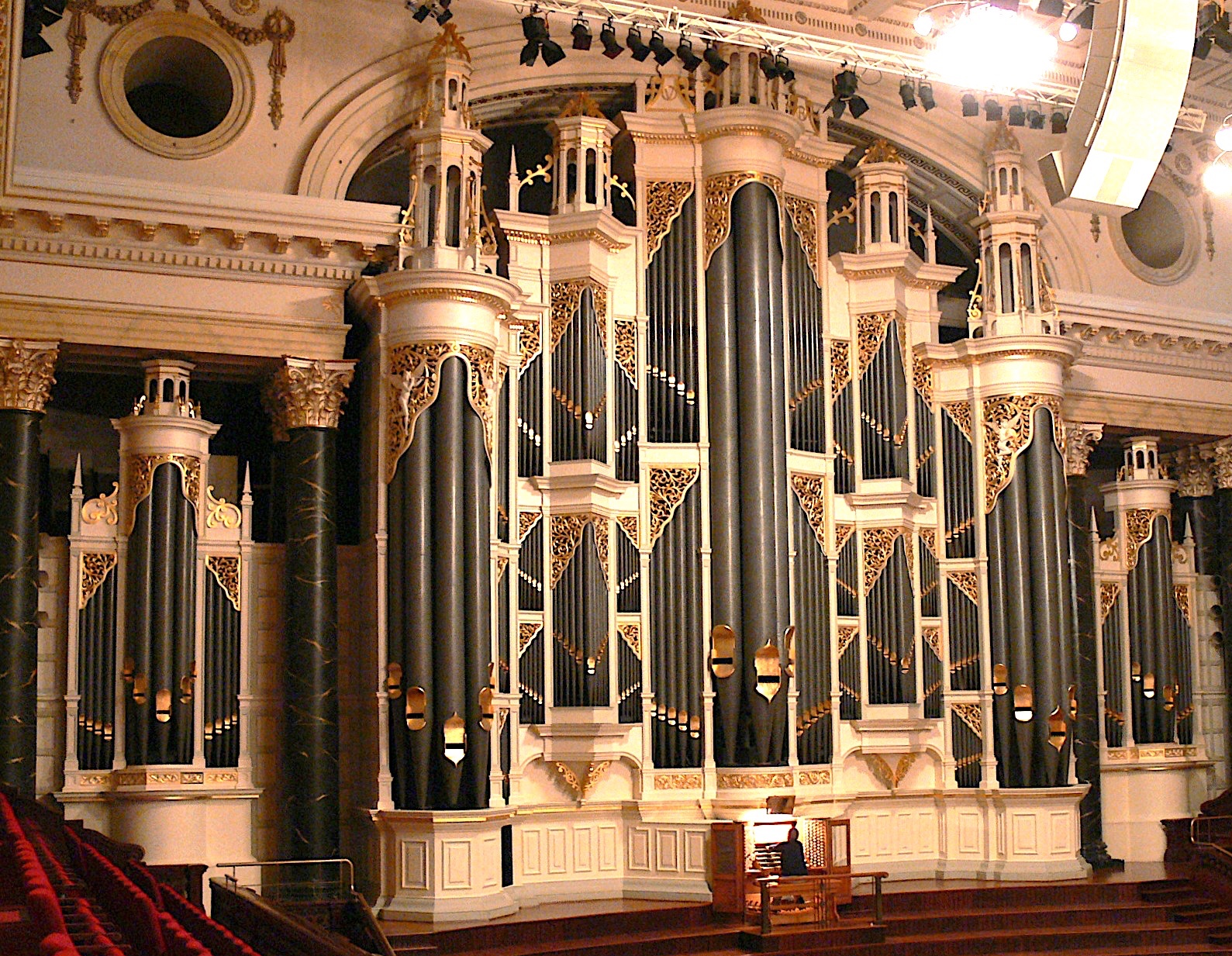
At the time of its construction, this was the largest organ in the world, with an extraordinary range of tonal resources and a splendid case. The instrument has survived essentially intact apart from a lowering of the pitch in 1939 instigated by the conductor Sir Malcolm Sargent. A complete restoration (including the whole of the tubular-pneumatic and Barker lever actions) was superbly carried out by Sydney organbuilder Roger H. Pogson. Further work has since been done by Sydney organbuilder Peter D.G. Jewkes. Its survival is an absolute miracle, given the destruction of similar historic organs that has taken place in Britain.

St Mary's Star-of-the-Sea Catholic Church, West Melbourne (George Fincham 1898–1900)
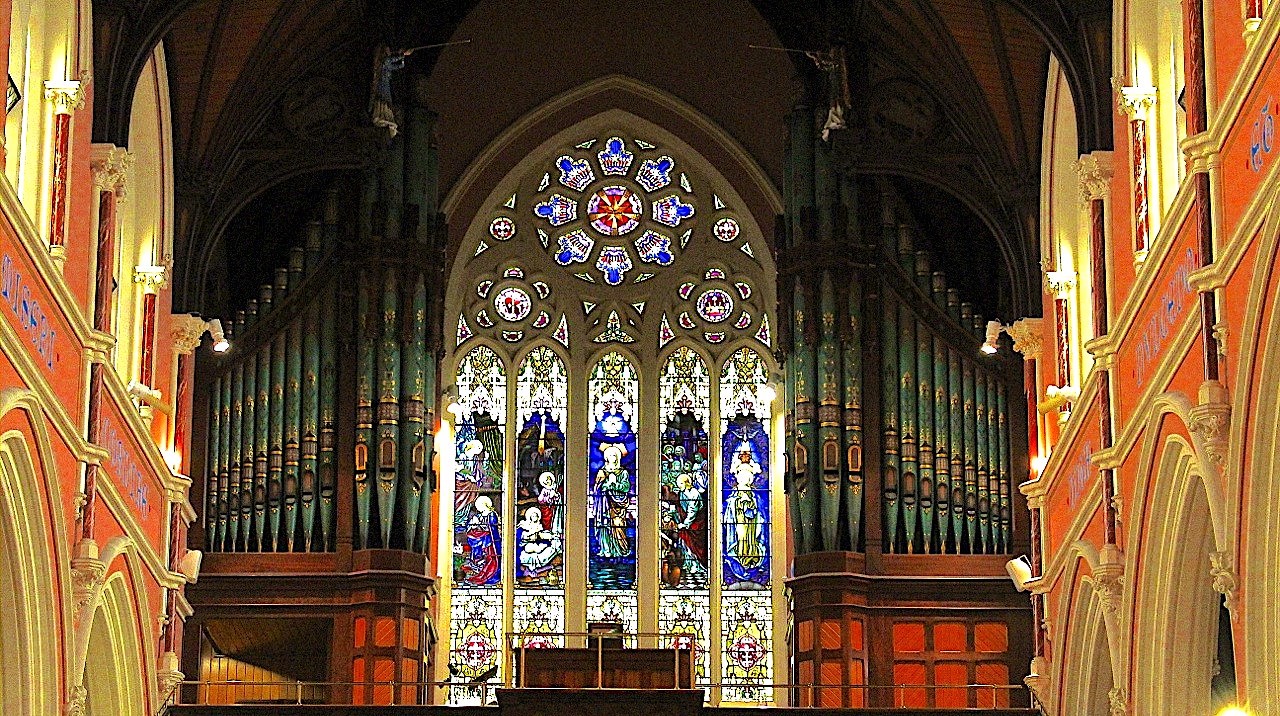
This is the largest example of an organ built in nineteenth-century Australia to survive almost entirely intact. The original tubular-pneumatic action, winding, and cone-tuned metal pipework all survive unchanged, and an outstanding restoration was completed in 1993 by the South Island Organ Company Ltd, from New Zealand. The work has proven to be very reliable and it sounds and appears to perfection in a very large building.

Barossa Regional Gallery, Tanunda (Hill & Son 1876–77)
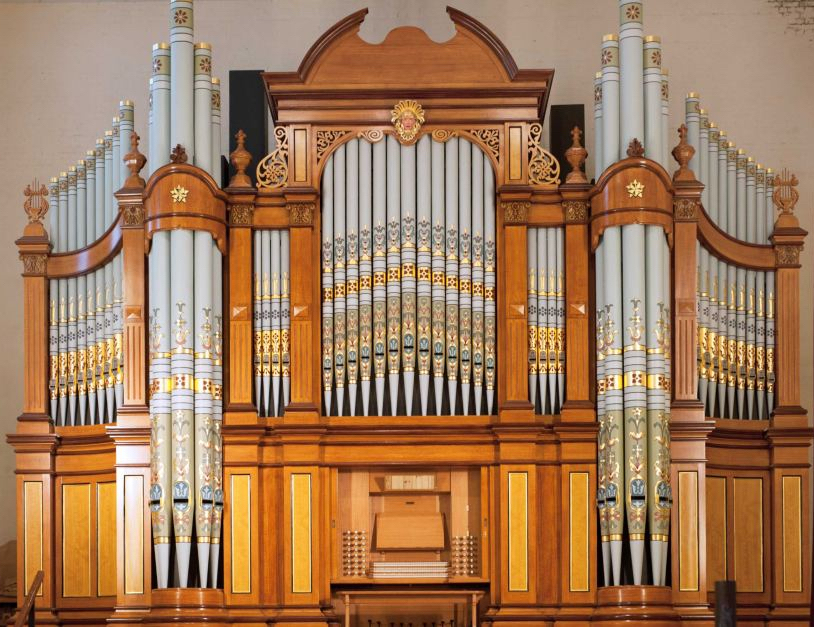
This instrument was built for Adelaide Town Hall and had been altered on several occasions through the addition of a fourth manual and pipework, and in 1970 through an invasive rebuilding that saw the original key and stop actions, and winding discarded. Replaced by a new Walker organ in 1990, it has been meticulously restored back to its 1877 state by Adelaide organbuilder George Stephens. This involved the reconstruction of the mechanical and Barker lever key actions, the complex stop actions, the two double-rise reservoirs (both fitted with feeders to permit hand blowing), the console, and several ranks of pipework reconstructed to Hill scales and voicing. The casework and façade pipes have been restored back to their 1877 finishes. The work has been outstandingly successful and the organ has made a major contribution to the community.

St Stephen's Anglican Church, Richmond (J.W. Walker 1865)
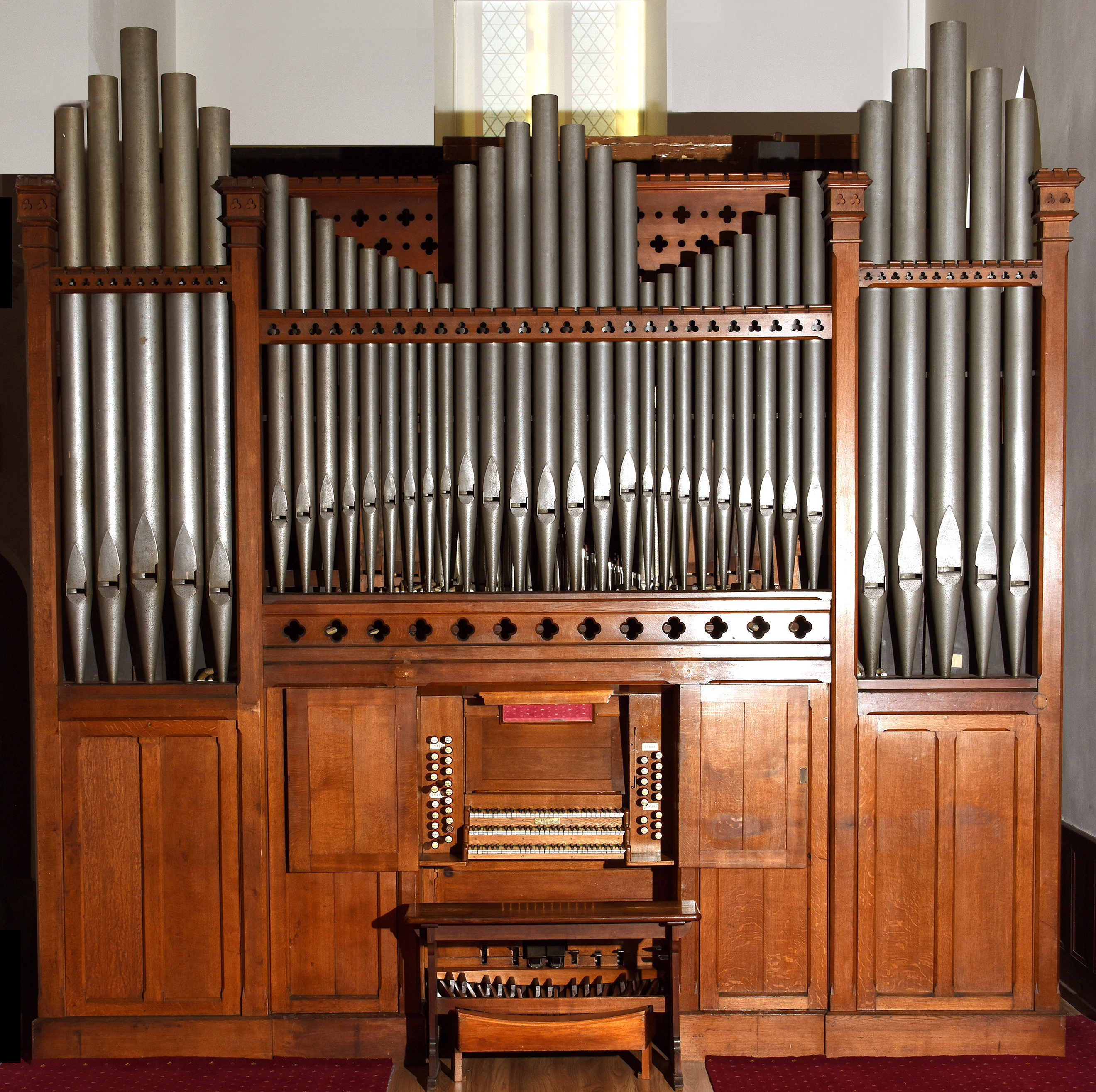
Built for the residence of William Philpott, this instrument was acquired by St Stephen's Church in 1869 and since then has remained almost entirely unaltered, apart from the addition of three stops to the Choir. With three manuals and 36 ranks (including 14 ranks of upperwork), this is one of the most outstanding examples of a Walker organ of the period to remain substantially intact. A full restoration, completed in 2019 by Wakeley Pipe Organs Pty Ltd, included meticulous work on the mechanical key actions and windchests.

Heritage Failures
St Peter's Church, Eastern Hill (Norman & Beard 1912)
This organ was dismantled by parishioners and placed in storage in 1967. A new organ was commissioned in 1974 and the parts of the old organ were widely dispersed around Australia on account of their excellent quality. This happened before the foundation of OHTA.
Melbourne Town Hall (Hill, Norman & Beard 1929)
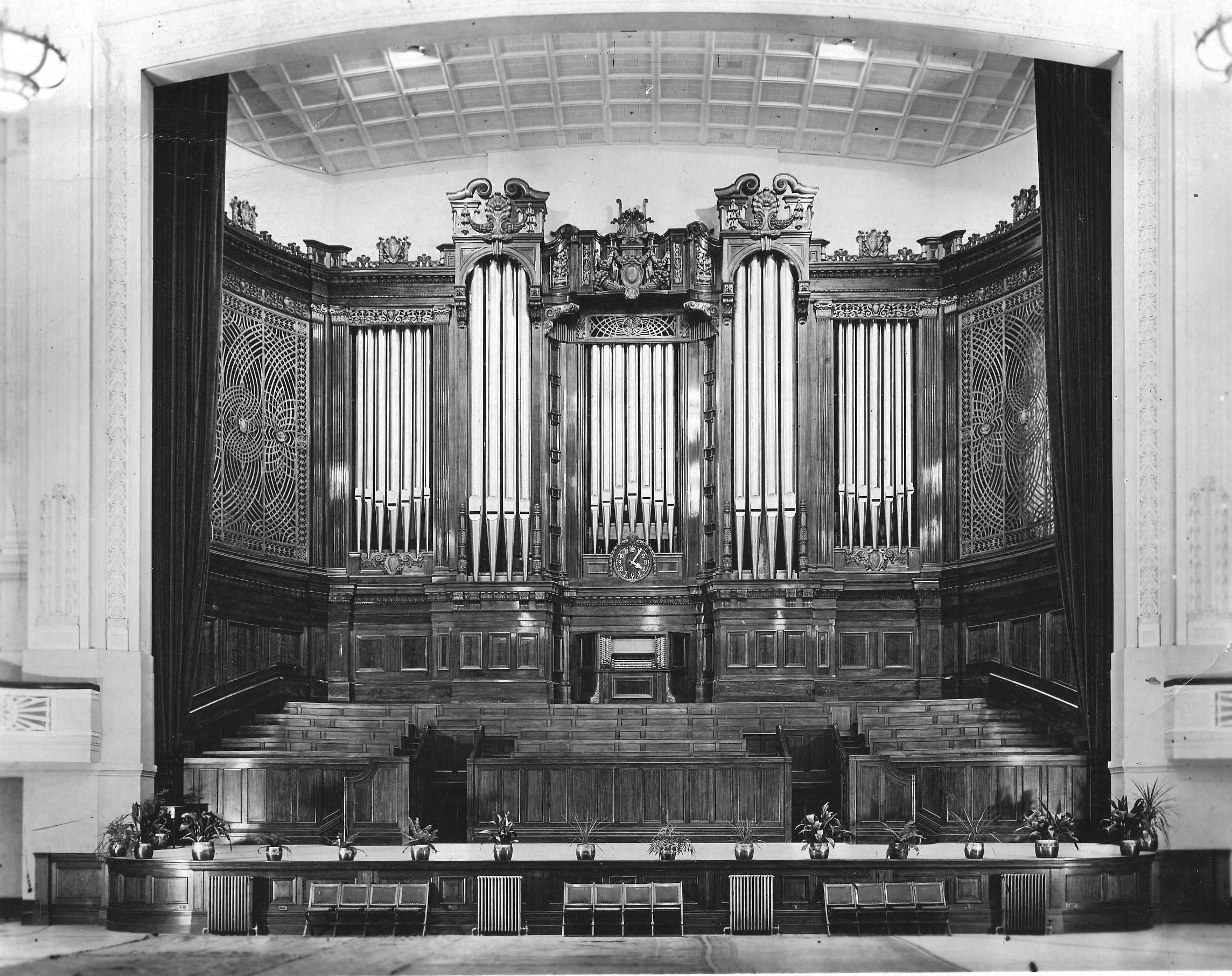
The whole of this instrument was gutted and only the case, the majority of the 1929 pipework, parts of the original console, and a small number of unit chests retained. The whole layout was revised and the instrument hugely enlarged resulting essentially in a new organ. This was completed in 2000 in spite of many objections.

Melbourne Grammar School (Norman & Beard 1913)
This organ had already been rebuilt and altered in 1947 and 1966. In 1994, the whole of the wind system was removed at another rebuilding with disastrous effect, in spite of a government heritage hearing. The space occupied by the previous reservoirs was used to accommodate extra pipework and chests, affecting tonal egress, and the loss of the original winding has resulted in a serious diminution of tonal quality.
Redundant Organs
With the closure of many churches, considerable numbers of pipe organs, many of historical significance, have become superfluous and made available for relocation. OHTA has offered a service to advertize such instruments and to assist in their relocation. There have been many successes, ensuring the organs are preserved (and often fully restored), and often placed in far more sympathetic acoustical environments where they sound and perform to far greater advantage.
Ongoing Targets
St Aloysius' Church, Caulfield, Victoria (Merklin-Schütze, Brussels, 1870)

This large three-manual organ in French-romantic style, has been dismantled for more than 20 years and requires full reconstruction of its key and stop actions and console to enable it to function, following an unsatisfactory rebuilding in 1919. Almost all of the original pipework (including a Grand Orgue reed batterie at 16, 8 and 4ft pitches), windchests, building frame, casework and wind reservoirs survive. It would not be permissible for an instrument of this stature to be exported from Europe nowadays.

Conclusion
Through the vigilance of the Organ Historical Trust of Australia during the past 43 years, Australia’s organ heritage has been well protected and documented. Many organs have been carefully restored and organbuilders have developed a wide range of conservation skills. The greatest challenge in the future will be to preserve many organs as a result of diminishing church congregations and the closure and sale of buildings. Significant assessments will need to be undertaken in such instances and regrettably many instruments may not merit restoration and transfer to new venues. Priority will need to be given to organs that are rare or unaltered and fine examples of their builder’s work. Alternative venues will need to be sought out, such as schools, private residences or even concert facilities.
––––––––––––––––––––––––
The views and opinions expressed in this article are those of the author, and do not necessarily reflect the position of Vox Humana.